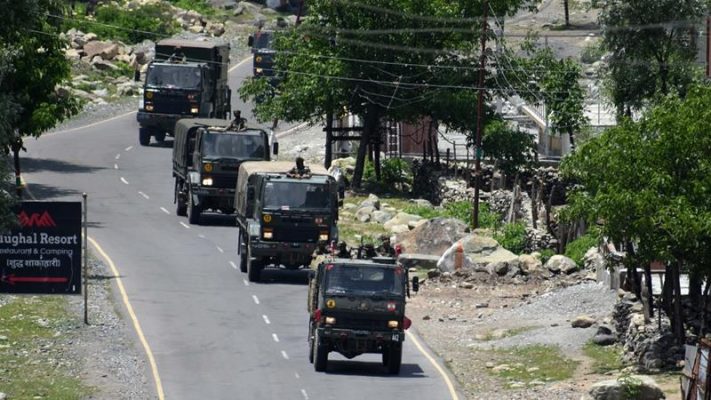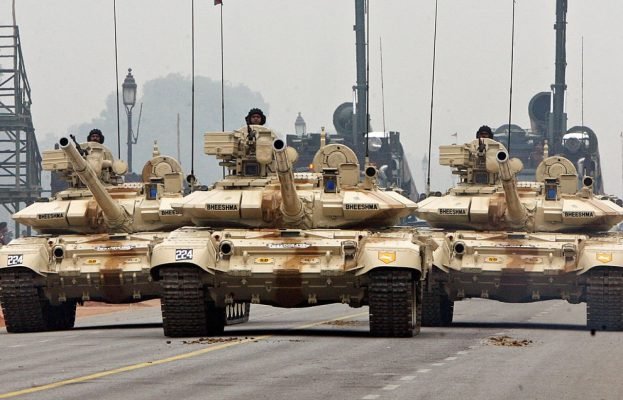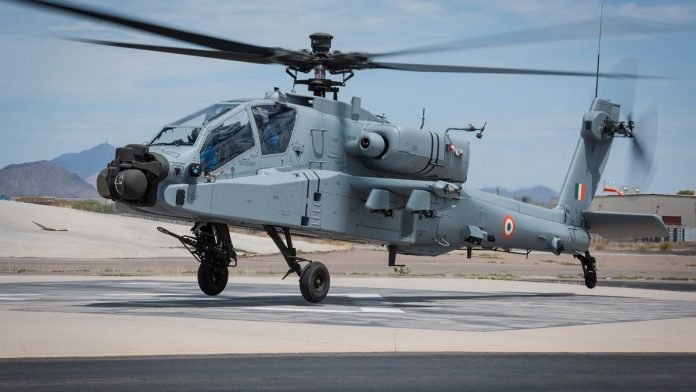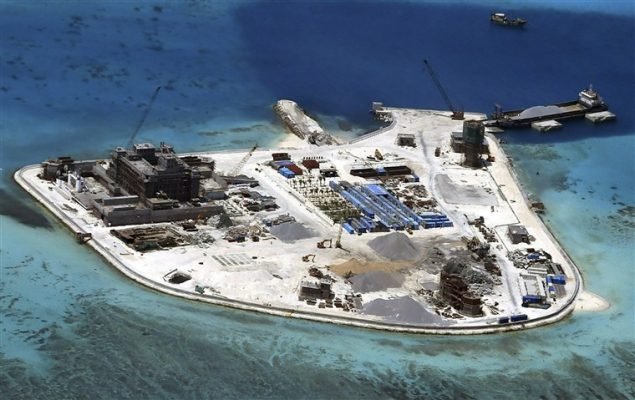
In the recent past, discussions in the strategic circuits have highlighted the Sino Indian conflagration in the Indo-occupied Tibet border. A majority of the strategists have been quick to declare how a quantitatively and qualitatively superior PLA would outflank India across multiple fronts in-case a war happens. Given the emergence of the issue which has led to an unexpected number of experts in Sino-Indian strategic relations to provide their analysis across multiple dimensions, it would be suggested to analyse the issue more deeply keeping the present and past geopolitical facts into consideration.
Through this article, we discuss some of the advantages and disadvantages both the nations might be having in strategic parlance. The article tries to provide a thorough and grounded research of their strengths and weaknesses.
India’s advantage. India’s total battle hardened military and para military personnel of 3,544,000 (1,444,000 active and 2,100,000 reserves) is higher in terms of number compared to China with 2,693,000 total military personnel (2,183,000 active and 510,000 reserve), as per Global firepower 2020, is considered a significant advantage for India.
This actually means that even in the case of a two front war, India would be able to hold ground in the event of a confrontation for a much longer period waning off any advantage China might seem to gain. India would be expecting a positive show of support from the US and allied nations like Japan and Australia during this difficult time. The question is whether they would be in a situation to assist India actively rather than passively.
China’s advantage. Chinese significantly gain only if the war is short and decisive and assisted by allies like Pakistan from multiple fronts in a situation with a surprise element embedded in its strategy. A bad case scenario for India would be a sudden multi-pronged attack from China, Pakistan, Nepal, Sri Lanka and Bangladesh which at this point of time seems less probable. Of course India is not a sitting duck, and has quickly learnt its lessons beefing up its borders by several notches. But who knows what is in store for future. It would also be better answered by Indian intelligence agencies monitoring the ground activities of neighboring nations. Did any of the known strategists visualise the anti-India stance Nepal would embark after claiming Lipulekh and Kalapani?
The question for the strategists is whether the multi-pronged attack is likely in the near future or later and how prepared we are in case of an eventuality. Who are the allies India would need during the crucial times and what would be their role and strategy? Can a powerful deterrent be created to avert an unexpected situation? For China, Pakistan and Nepal are the aces which could be used during any exigency and which India needs to counter in the time to come with its own narrative. China gained significantly with Nepal by its side and can India bring it back to its own fold at least so as not to let China gain a foothold at the cost of India? Does India have a Plan B to counter Nepal and its unruly anti-India jingoist political leadership?

India’s advantage. As China has a landmass which is approximately three times that of India sharing borders with 18 countries and having complex boundary issues with a majority of them, it might indicate that the forces from its side would be significantly overstretched out over a larger area. China has a vast landmass, the terrain is harsh and mountainous. Even if it wishes to utilise all its strength, the terrain makes it literally impossible to deploy its troops all over the Line of Actual control (LAC). Military experts know that many of the fighting equipment like tanks and artillery (even light tanks and artillery) cannot be deployed on the mountainous terrain across all its borders with India.
Also, manning and holding the terrain would be difficult for China at any point of time. Most of the troops deployed in the Sino-Indian borders come from distant areas of China which creates a massive logistics challenge including the costs incurred in stationing and feeding them other than arming for the confrontation. India has the advantage as its troops can be replenished much quickly if required. Numerical advantage of China goes to the drain in most of these areas due to geographical disadvantages even if China has made major strides in improving its internal infrastructure for rapid force deployment.
Comparatively India’s landmass makes it easier for troop movement from one place to another within limited period. Given the military tensions it has with several of its neighboring countries like Taiwan, Japan and South Korea, it might not be plausible for it to deploy all of its land, air assets on Indian borders. This means that China would have its task cut short. An additional issue at hand for China is the limited number of air bases mostly separated by huge distance and at high altitude making the taking off of fighter planes risky due to thinning of air.
Secondly the fuel and weapons carrying capacity reduces by a factor of half making their air force loose sheen against Indian Air Force with multi role combat fighters like Su-30 MKI taking off from plains with full weapons and fuel load in case air forces are pressed into action. The advent of multi role fighters like Rafale, Apache Helicopters and Chinook transport Helicopters along with C-130 J Hercules and C-17 Globemasters in the Indian stable add to the Chinese PLA headache. The PLA does have enhanced capabilities for Electronic countermeasures and reconnaissance through its series of Geo satellites for ground observation and spying but so does India. India has a lethal access to technical support and observation through its own network of satellites with an additional support from US intelligence network and other allied nations.

China’s advantage. Chinese are in an advantage only if they are able to get all the Chinese forces to Indian borders and encroach massive Indian territories. But given the current situation, China having picked up confrontation with Japan and Taiwan, it might not be in a position to do so unless they leverage some support from Pakistan and sleeping partners in Nepal, Bangladesh and possibly Sri Lanka given the past issues with India.
Having said that, there are high chances of Pakistan coming to the rescue of China, but other smaller nations know the difficulty of siding unilaterally towards China. One deviation towards China and they would be overrun by Indian military before China comes to their rescue. These nations also know very well that going against India would mean going against US and NATO, Japan and South Asia and even West Asia! The question is, would these nations risk going against India towards China in a war like situation?
India’s advantage. Just like India has a large number of forces deployed in Kashmir, similarly a large number of its military are deployed in region of Xinjiang which are inhabited by Uyghur Muslims, and who are considered as threat for Chinese PLA. The province has been at the crossroads of tension between the Han-Uyghur ethnicity and the Chinese state. This has resulted in rising incidents of terrorism, separatism and demands for political and religious autonomy.
Suyash Desai report in Deccan Herald about a recently published research paper in the China Quarterly by Adrian Zenz and James Leibold which argues that the presence of People’s Armed Police (PAP) in this region has increased 13 fold since 2014. An additional headache for China is its handicap against India as it needs to bring all of its military from its other commands (China has five commands) to India’s border in the event of war while Indian forces who remain entrenched in Kashmir in adequate numbers need not shift positions much.
China’s advantage. India on the one hand has to deploy a large number of troops on the Pakistan side a major handicap for her. But, China has to continue to do the same across its eastern and western borders as well leveling the advantage by a notch. India on the other hand has its troops stationed in Kashmir which is close to the Pakistan and China border.

India’s advantages. Given the conflagration and tensions shifting locations from India-China border, Shenkaku island nationalisation by Japan and emerging objections from China, Taiwan border issue, South China Sea conflicts with South Asian nations like Vietnam, Philippines, Indonesia, Malaysia and China’s pain aka Honk Kong after imposition of national security law, will China risk military escalations with India knowing very well that India would get clear support from US, Japan, Australian and other allies?
Even Russia would remain a silent supporter of India in case of an exigency given its willingness to escalate the supply of arms and ammunition to India. China knows very well that three of the US aircraft carrier fleet are closing towards South China Sea and there are clear advantages staked towards US against China. If US is close, will NATO remain too far? This also indicates that it would be difficult for China to shift all its gears toward India as it would give an opportunity to US. The conflict would also give an opportunity to the Britishers with its aircraft carriers itching for a revenge for bringing in the Chinese national security act against the agreement signed during the handover of Hong Kong.
Conclusion:
Though it would be foolish to discount the chances of an impending war, it would come at a huge cost for both the nations if it all happens. India never intends to capture someone’s territory but would do everything to save its land from encroachment. China knows that for the possible gains on the mountainous terrain with India, it would lose lot of prestige and money if at all Hong Kong ends up as an independent nation given the pressure it is in by US and NATO. Even if minor gains do come for China, it would be futile as the advantages might come at a huge cost of lives lost not just for India but for China too.

The economic cost for China and the market lost would be a huge embarrassment. China should not forget that the whole world is currently seething in anger against its expansionist policies and its hand in glove policy to throw the world in the arms of Coronavirus pandemic. Having said that it would be prudent for India to be more realistic. India should maintain a hardline position against China and if required should not fear a localised confrontation or a larger escalation against the latter to defend itself.
The writer is an Assistant Professor in Strategy and Entrepreneurship at Nirma University, Ahmedabad. A PhD from IIT Kharagpur, Dr saurabh writes on international geopolitics, and previously contributed articles and opinions to United States Naval Institute (USNI), Nikkei Asian Review and Taiwan Times. He can be connected at punit@nirmauni.ac.in. The views expressed are personal and do not necessarily carry views of Raksha Anirveda









